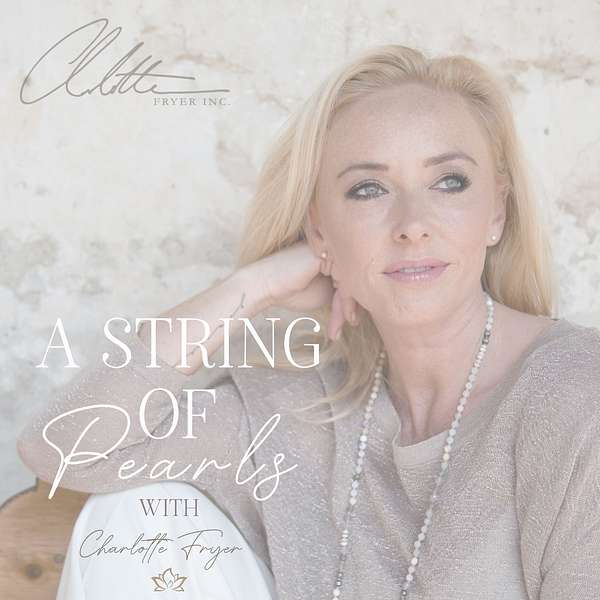
A String of Pearls
A String of Pearls covers a wide range of topics from perception to manifestation, crisis and recovery, soul mates to sacred contracts. These pearls are extracts from conversations I have had over the last 25 years navigating thousands of individuals, couples, families, and professionals through the great tipping points of change and transformation. It is my hope that somewhere in your listening you find a pearl or two that has personal meaning to your journey. May they be strung together to offer an intimate thread of hope, inspiration and comfort as you continue to journey through this often challenging, yet miraculous gift of life.
A String of Pearls
Higher & Lower Selves
We are made in perfect balance. The struggle is with acceptance.
0:00:17.7 Speaker 1: One of the basic principles that I apply to a healing process with people is the fact that... I say fact, sorry.
0:00:29.5 Speaker 1: One of the basic principles that I apply to a therapeutic process with people is the concept that we as a being, our human condition can be broken down for simplicity into what I refer to as the higher and the lower self. That higher self is the part of us that can fulfill our greatest aspiration, our higher self is the part of ourself that frequents on the vibration of love, our higher self is the compassionate, the patient, the generous parts ourself. It is the good listener, the empath, our most creative source. Higher self is kindness, it's grace and it's forgiveness, it is our ultimate... Yeah, ultimate version of our gifts and our talents, and what it is that we came here to contribute. And conversely, lower self is informed by our fear. Our fear then creates behaviors such as being judgmental, perfectionistic, controlling, dominating, we can fall prey to our insecurities, all manner of nuances and so our lower self could be referred to as the shadow self, but I think of it as bringing it out of the shadow and into the light.
0:02:17.8 S1: The lower self is very closely related to the unhealed parts of our inner child and the lower self is not something to be ashamed of. It's something to embrace and to look at and to have it inform us. It's actually in many ways, a very clear roadmap of healing. What in our lower self are we exhibiting and overly attached to that is then traced back to experiences that we are still relating to in a way where they held us suffering versus shifting the perspective of those experiences and seeing where the opportunity was, the lesson was perhaps. And that then allows us to glean new insights and in having new insights from those experiences, being able to work with the higher self and the characteristics of the higher self that then balance out the lower self. So when we are being really hard on ourself, for instance, when we're highly judgmental, critical of ourselves, that would be considered to be our lower self, right? It's also part of the ego constructs. And so how does one counter that? Is to look at empathy, having empathy for where that judgment comes from in the first place, and then applying act of compassion towards that inner child that's still activated as a result of being triggered from those experiences. And then working toward being creative in our thought about what it was that we got out of those experiences. Tapping into our intuition, our creativity to reveal maybe a deeper sense of purpose from those experiences.
0:04:34.5 S1: And so the self in its higher and lower realms, they are marriage, they are union. We are not meant to shut ourselves off from our lower self and hide it. We're meant to bring it into the light and work with it, because without that, we're not in balance and we know who we are. We truly know who we are when we embrace the elements of self that we don't so readily love. For instance, for me to say, I am patient, then I have to know what impatience is. I have to know that I have the tendency or in the past, the behavioral impulse to be impatient. And therefore I know I'm patient because my highest self chooses to implement that behavioral choice over and over. How do we know what we are if we don't have a comparative? And I believe that that's really the ultimate purpose of being here in this world, is to know who we are and to find through many different trials and tribulations that we are not our fear, that we are indeed our love, and to exist as many moments as we can in that knowing.